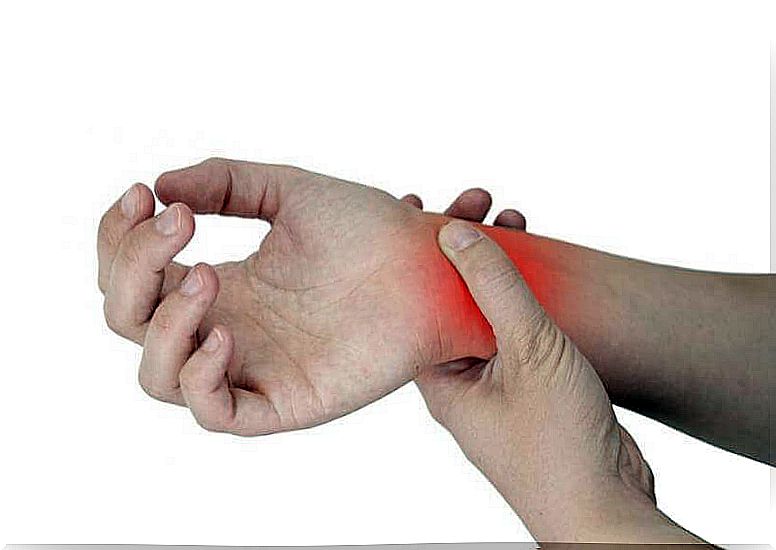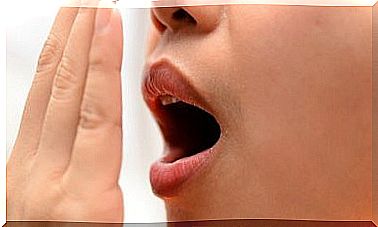Tenosynovitis: Inflammation Of The Hands And Feet

The name may sound a little strange, but tenosynovitis is actually a problem that many of our readers should be aware of.
Tenosynovitis is an inflammation of the lining of the sheath that surrounds the tendon. It is painful, disabling, and focuses especially on the feet and hands.
Small bumps may appear, the skin is red, and the patient doesn’t quite know what it is. They didn’t suffer any falls or bumps and, even so, the pain is intense even at rest, and impairs part of their mobility.
Experts indicate that it is important to get an early diagnosis. Only then can we prevent inflammation from further damaging tendons and their linings and from having more serious problems.
In case of inconvenience, do not hesitate to consult a good specialist. Next, we will explain the essential data about tenosynovitis.
Tenosynovitis, a disabling joint pain
To understand what tenosynovitis is, let us imagine a tendon. It is the perfect structure that joins any muscle in our hand to the bone.
This tendon, in turn, has a lining, the synovial membrane, which protects and insulates our tendons. This is precisely where inflammation and pain occur.
What is striking about tenosynovitis is that it affects the flexor muscles, that is, we will notice the first symptoms of this condition when moving the hand or walking.
In the beginning it is simple, but little by little inflammation, stiffness, numbness and even fever appear.

Who usually suffers from tenosynovitis
Tenosynovitis of the upper extremities especially affects women.
In addition, people who play sports or who have handicrafts, such as tailors, meat cutters or dentists, also suffer from it.
What are the symptoms of tenosynovitis
- Pain in the wrist, ankles, soles, heels…
- After a few days, redness or inflammation appears. When this happens, pain appears even at rest.
- The fingers and toes “snap” as they are moved.
- In addition, lumps on your fingers or toes can develop as a result of the infection.
- It is difficult to manipulate objects, walk, carry out any daily activity. It’s a very uncomfortable thing.

What causes tenosynovitis
The main causes of inflammation of the tendon lining are repetitive movements of the hands and feet, as well as the bad posture we tend to adopt without realizing it.
In each of these repetitive and continuous movements there is excessive friction between the tendon and the bone. Wear and tear appear on the lining that protects the tendon, until little by little inflammation occurs.
De Quervain’s Syndrome
One of the most common lesions associated with tenosynovitis is De Quervain’s syndrome.
It is an inflammatory disease of the tendons that affects the thumbs of the hands.
- It is relevant, for example, that everyday events such as raising a small child, sewing, writing on the computer, or even playing a piano cause this type of tenosynovitis.
- In addition, the following can also occur: we tap with our thumb. We suffered a small tendon injury, which we are not aware of. We feel pain, but over time, the tissue heals.
- However, this scar tissue can prevent the tendon from working properly. It’s something we should consider and it can also cause De Quervain’s syndrome.

Usual treatment for tenosynovitis
The main goal of treatment for tenosynovitis is to reduce inflammation. It will always be our doctor who is able to offer the best strategy.
The most common is to combine a pharmacological treatment with some type of rehabilitation.
- We should keep the hand or foot immobilized for a few days with some kind of splint or bandage.
- Cold-heat therapy is also very effective in these cases.
- In addition, it would be convenient to make warm baths with rosemary water.
- Ginger infusions are highly recommended. They allow you to reduce pain and inflammatory processes.
Physical therapists are also a wonderful help in treating tenosynovitis. In addition, they can teach us what exercises we could perform at home to regain mobility and strength.
Last but not least, it is important to take into account one aspect. Tenosynovitis can reappear, so we must take care of our postural hygiene and our movements.
The basic idea is to reduce stress and pressure on our tendons.
Ask the professionals for advice, avoid overloading and, first of all, be aware that your tendons and joints are wonderful structures to take care of.









